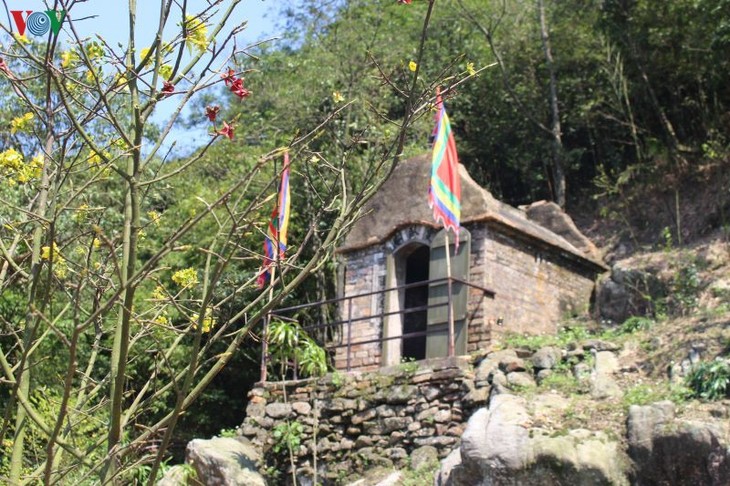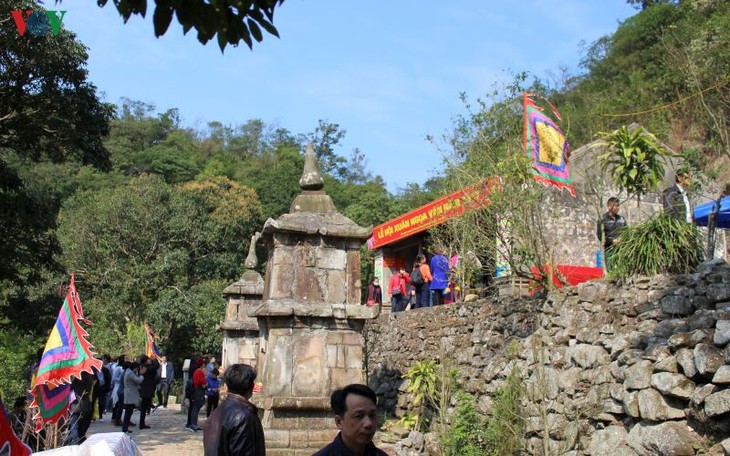(VOVWORLD) - Yen Tu and Ngoa Van in Quang Ninh province were two important places in King Monk Tran Nhan Tong’s Buddhist life. The King, who was born in 1258 and died in 1308 gave up his power at a young age to lead a monk’s life on Yen Tu mountain, where he practiced and taught Buddhism and established the Truc Lam Yen Tu Zen sect. He spent his final years at Ngoa Van pagoda on Bao Dai mountain.
Ngoa Van pagoda, which means "Pagoda in the Clouds", has curved roofs and looks to the sea. This was the final destination of King Monk Tran Nhan Tong’s journey of Buddhist practice, propaganda, and enlightenment. The Truc Lam Yen Tu Zen sect, which integrates Buddhist teachings with Vietnamese culture, is his most precious legacy.
After seven centuries, the King’s Buddhist ideology is still found humane and relevant to Vietnam’s development, according to Professor Doctor Vu Minh Giang, Vice Chairman of the National Council on Cultural Heritage: “There had previously been several Zen sects in Vietnam, influenced by different schools of Buddhism. They were united by King Monk Tran Nhan Tong into the Truc Lam Zen sect. His Zen sect became a major spiritual support, embracing Vietnamese culture and philosophy. The King advocated engaged Buddhism - followers who seek to apply the dharma teachings to social, political, environmental, and economic suffering and injustice.”
 Ngoa Van hermitage - one of 14 relics built during the Tran dynasty Ngoa Van hermitage - one of 14 relics built during the Tran dynasty |
Archaeological studies have found that by the first half of the 14th century, Ngoa Van had become a large mountain top complex which included a hermitage, a pagoda, and a tower where the ashes of King Tran Nhan Tong were kept.
Venerable Thich Dao Hien, Deputy Head of the Executive Board of Quang Ninh province's Buddhist Sangha, told VOV: “Ngoa Van was selected by King Monk Tran Nhan Tong as the place to practice Buddhism in his final years. It is in Dong Trieu – the native land of the Tran family. Ngoa Van is considered the holiest place in Vietnam because it is where the King attained Nirvana. All the buildings in the Ngoa Van complex as well as special relics built during the Tran dynasty remain intact. Many artifacts of the Tran kings have recently been unearthed, such as a gold lotus-shaped box, which was discovered in 2019 and recognized as a national treasure.”
 Ngoa Van pagoda Ngoa Van pagoda |
Years ago, the only way to reach Ngoa Van was by climbing a path just wide enough for a single person. The path had bamboo trees and apricot blossoms on one side and an abyss on the other side. The buildings inside the complex are separated by deep streams. In 2016, a cable car to the top of Bao Dai mountain was built using donated-funding.
Nguyen Van Son, Manager of the Tran Dynasty Special National Relic Site in Dong Trieu township, said: “A new paved road has been built along the 18B trail, which used to be the pilgrim route of the Tran Kings. The new road connects the Tran Dynasty Special National Relic Site with the Yen Tu and Ngoa Van relic sites, which is helping to attract more and more tourists to this area.”

A tower of the Ngoa Van complex where the ashes of King Tran Nhan Tong are kept.
|
The Ngoa Van complex holds spiritual significance and boasts magnificent natural scenery of the bow-shaped Dong Trieu mountains. The complex draws thousands of pilgrims to its spring festival each year.